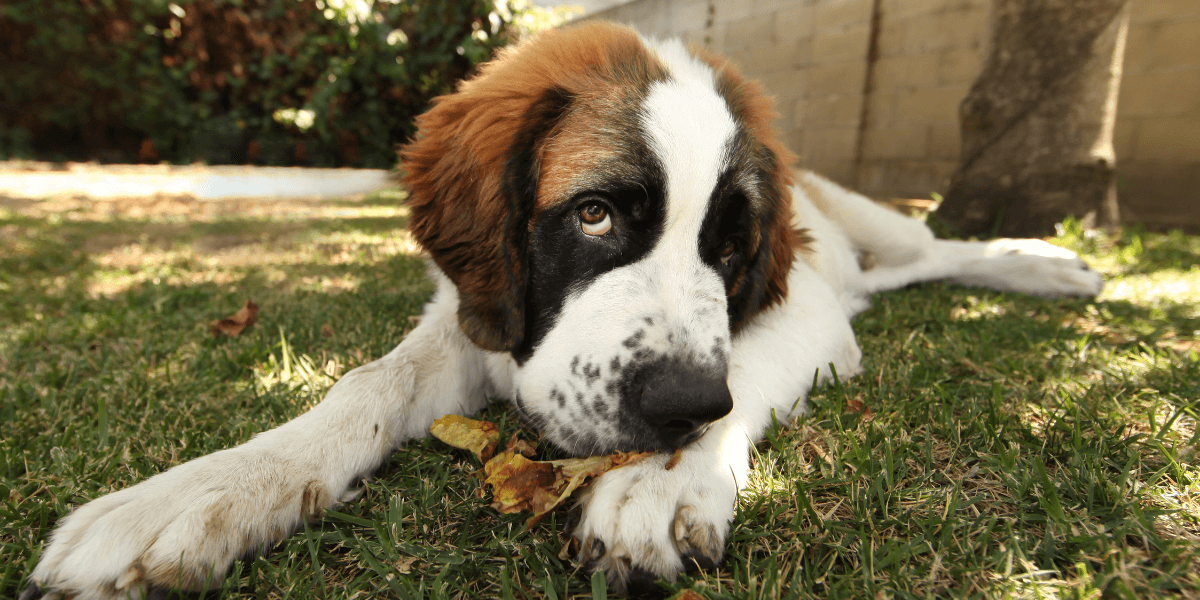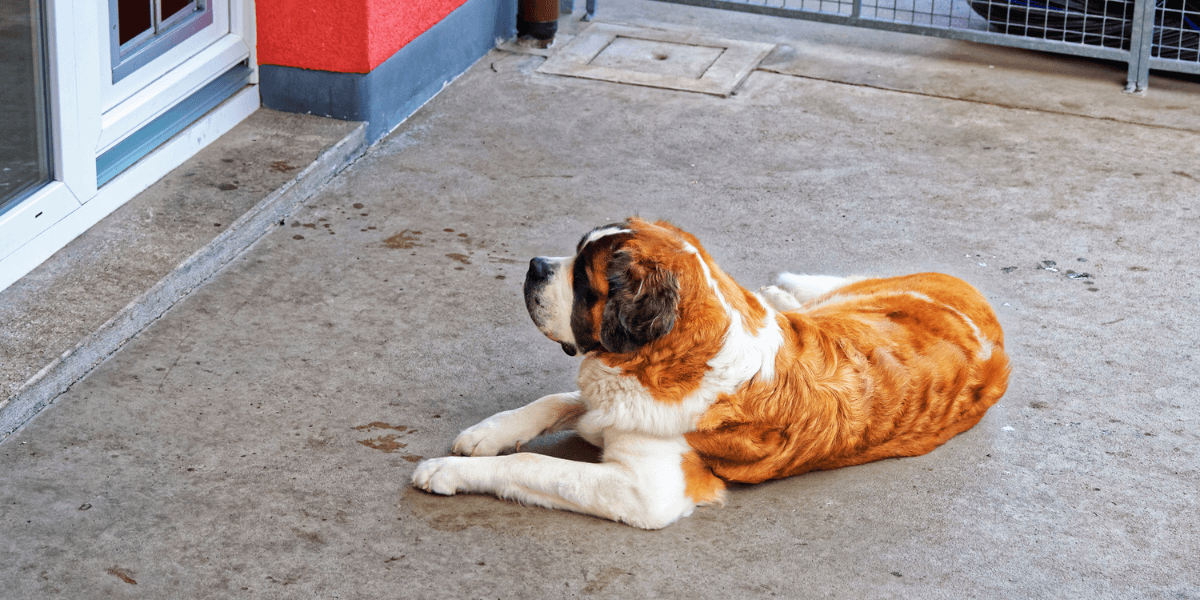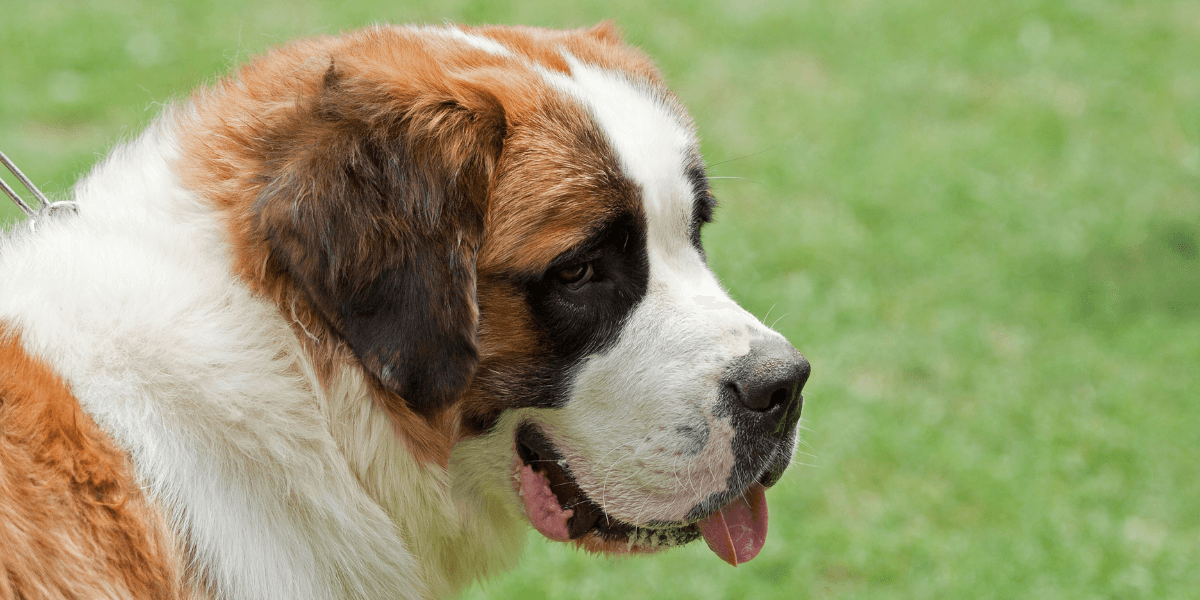Introduction
The Ultimate Guide to Saint Bernard covers everything about this gentle giant dog breed
- Known for their calm nature, Saint Bernards are perfect family dogs and loyal companions
- Learn about their history, personality traits, and training needs for a well-rounded pet
- Discover essential grooming tips to keep their thick coat clean and healthy year-round
- Get insights into common health concerns and how to keep your Saint Bernard fit and happy
1. Understanding the Saint Bernard's Coat
Saint Bernards has a dense.
Double-layered coat designed to protect them from harsh weather conditions.
This luxurious coat requires consistent care:
- Shedding: Regular grooming is essential to manage shedding and maintain a clean home
- Brushing Routine: This helps remove loose fur and prevents matting
- Dealing with Mats and Tangles: Due to their thick fur, mats can develop, especially behind the ears and under the legs
Tip:
- Invest in a high-quality vacuum
- Lint rollers to stay ahead of fur accumulation in your home
2. Bathing Your Saint Bernard
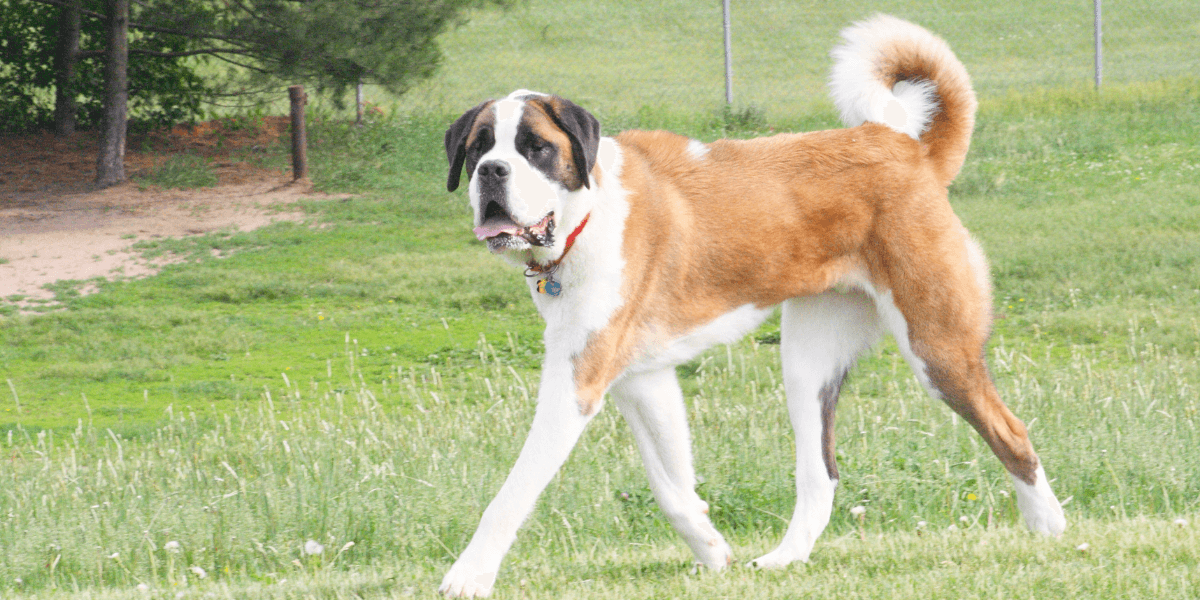
Bathing a giant breed like a Saint Bernard can be a task.
But it’s necessary to keep their skin and coat in good condition:
- Frequency: Over-bathing can strip the coat of its natural oils, leading to dryness
- Products to Use: Use a mild, dog-specific shampoo that’s gentle on sensitive skin
- Drying: Use a high-velocity dryer to prevent dampness, which can lead to skin infections
Pro Tip:
- Always check for hot spots or skin irritations
- While bathing your dog. Early detection can prevent more serious issues
3. Eye and Ear Care
Saint Bernards are prone to certain eye and ear conditions due to their droopy skin:
- Eye Care: Regularly clean the corners of their eyes to prevent tear stains and debris buildup
- Common Eye Issues: Watch out for signs of entropion (inward rolling of the eyelid) and cherry eye
- Ear Cleaning: Saint Bernards have large, floppy ears that trap moisture, leading to ear infections
Advice: If you notice redness, a foul odor, or excessive scratching, consult your vet
4. Nail Trimming and Paw Care
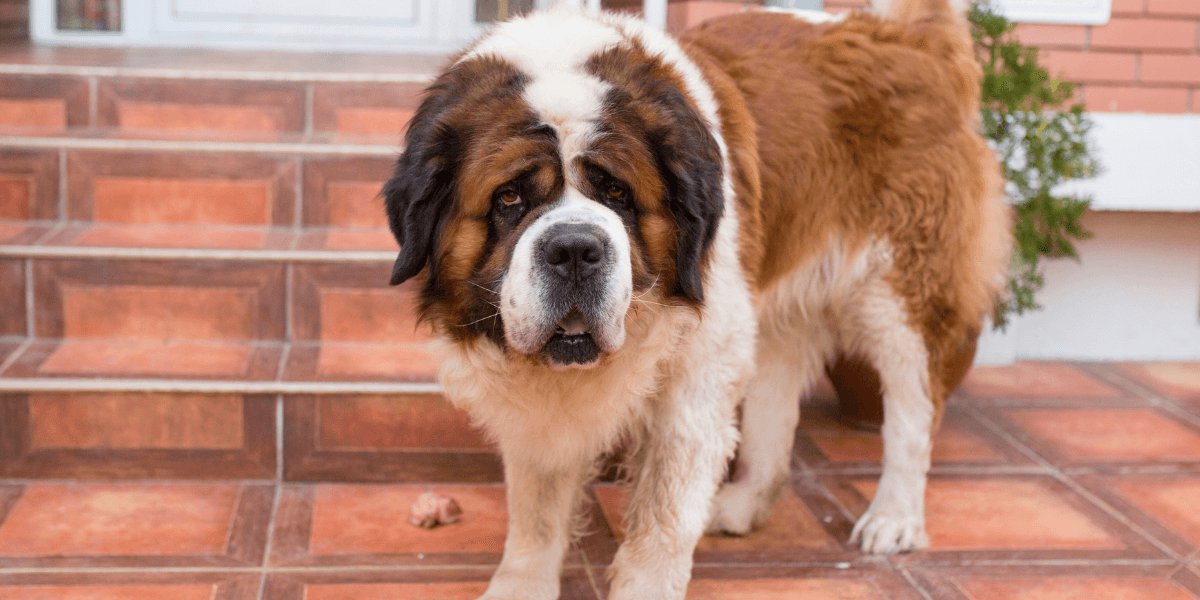
Proper nail care is essential for your Saint Bernard’s comfort and mobility:
- Nail Trimming Frequency: Long nails can cause discomfort, especially for large breeds
- Tools to Use: Invest in heavy-duty clippers or a nail grinder designed for large dogs
- Paw Care: Inspect their paw pads regularly for cracks, cuts, or foreign objects like burrs
Reminder:
- Always offer treats and positive reinforcement during grooming sessions
- To make it a stress-free experience for your Saint Bernard
5. Dental Care
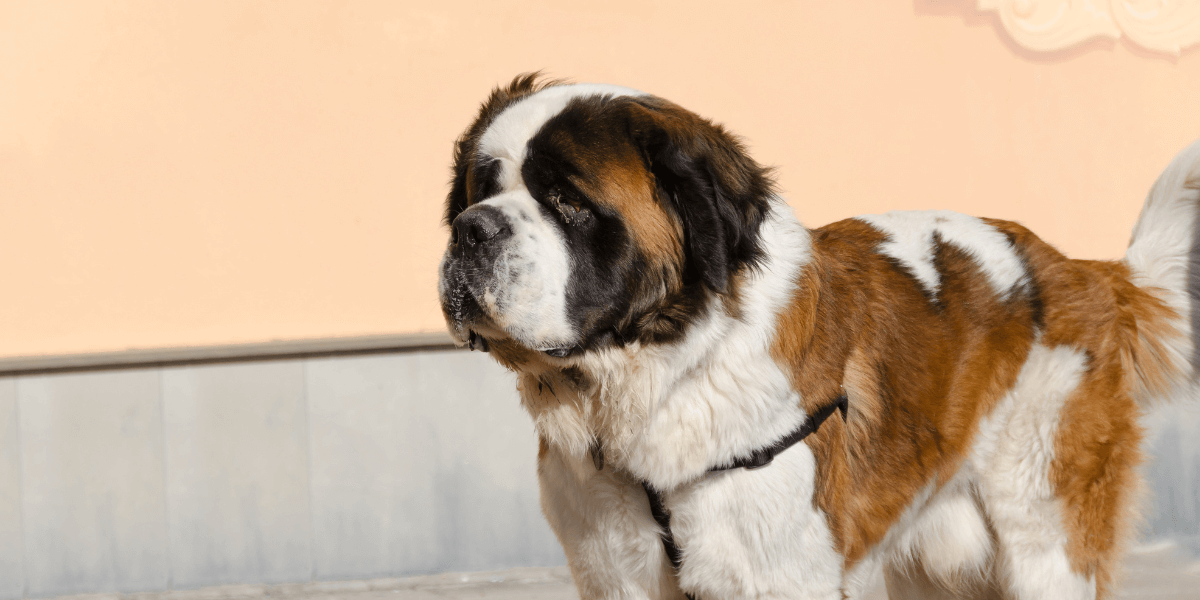
Dental hygiene is often overlooked but is crucial to your Saint Bernard’s overall health:
- Brushing Routine: Brush your dog’s teeth 2-3 times a week using a dog-specific toothbrush and toothpaste
- Chews and Toys: Provide dental chews and toys designed to promote oral health by reducing plaque buildup
- Regular Vet Checkups: Schedule annual dental exams and cleanings to catch any issues early
Health Note:
- Poor dental care can lead to gum disease
- Which may cause more serious health issues, such as heart disease
Keep your Saint Bernard's teeth healthy with these Simple Dental Care Tips.
6. Diet and Nutrition
A proper diet is the foundation of your Saint Bernard’s health and well-being:
- Balanced Diet: Look for food with a balance of protein, fat, and fiber
- Portion Control: Divide meals into two servings per day to avoid bloat, a common issue in large breeds
- Supplements: Consider adding joint supplements like glucosamine and chondroitin
Feeding Tip: Consult your vet to determine the best feeding plan based on your dog’s age
7. Exercise and Mental Stimulation
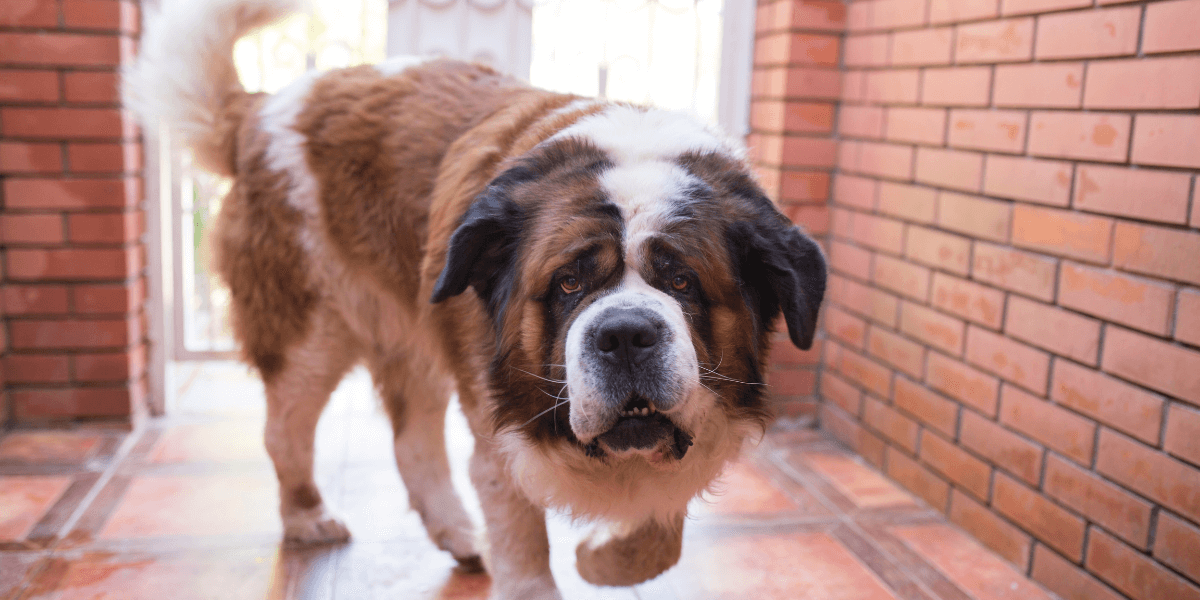
Saint Bernards may be gentle giants.
But they still need daily exercise and mental stimulation to stay happy:
- Daily Walks: Avoid vigorous exercise in hot weather, as Saint Bernards are prone to overheating
- Mental Stimulation: Provide puzzle toys, and socialization opportunities to keep them mentally engaged
- Joint Health: Low-impact activities like swimming can be a great option to protect their joints
Avoid over-exercising puppies, as their growing joints are sensitive and prone to injury
FAQs
1. What is covered in the Ultimate Guide to Saint Bernard?
- Detailed info on care, training, and health
2. How big do Saint Bernards typically get?
- Males: 140-180 lbs; Females: 120-140 lbs
3. Are Saint Bernards good with children?
- Yes, they are gentle and patient
4. What is the lifespan of a Saint Bernard?
- About 8-10 years
5. How much exercise does a Saint Bernard need?
- Moderate exercise is best; avoid over-exertion
6. Do Saint Bernards shed a lot?
- Yes, they shed year-round and need regular brushing
7. What are common health issues in Saint Bernards?
- Hip dysplasia, bloat, and heart conditions
Conclusion
- This Ultimate Guide to Saint Bernard provides everything you need
- Saint Bernards are loyal, and loving, and require proper care for a happy, healthy life
- Regular grooming, a balanced diet, and training ensure a well-behaved Saint Bernard
- Understanding their health needs can help prevent common issues and extend their lifespan
- With the right attention, your Saint Bernard will thrive as a gentle, devoted companion
Have more questions or tips of your own?
Share them in the comments below!
References
For further reading on The Ultimate Guide to Saint Bernard, check out these:
- Ultimate Guide to Saint Bernard
- Choosing the Best Orthopedic Dog Bed
- Saint Bernard Growth & Weight Chart: Everything You Need to Know
- The Ultimate Guide to Saint Bernard Dog Breeds: Care, Companionship, and More
- Orthopedic Dog Beds: Help for Senior Dog Arthritis?
Thank you!

